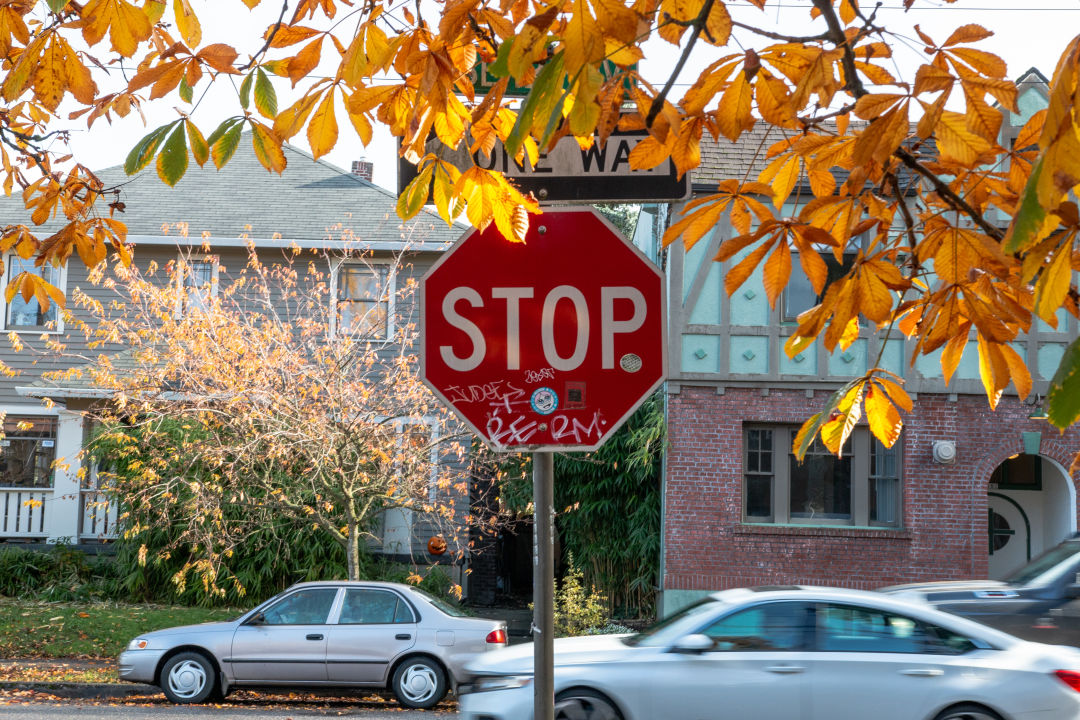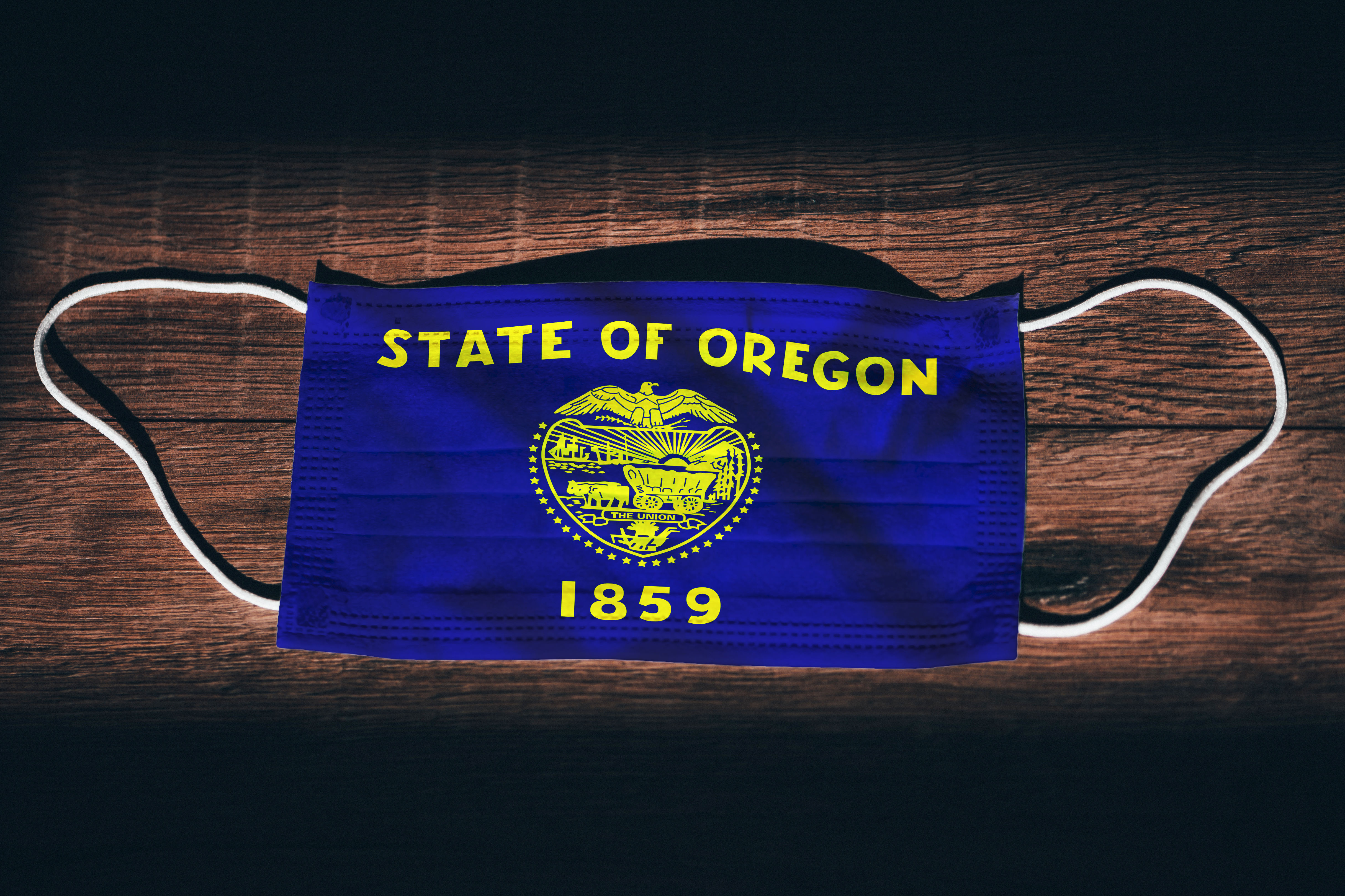Governor Kate Brown Issues a Plea for Oregonians to Stay With Their Household. Will It Work?

Nine Oregon counties are entering a two-week "pause" on Nov. 11 and being encouraged to limit their social activities.
Image: Gabriel Granillo
Update, November 13: It didn't work, and now the state is on a two-week "freeze." Read about what that means here.
Oregon Gov. Kate Brown has put Multnomah County—and eight others—on hold. Kind of.
In some of the strongest restrictions since the state's “Stay Home, Save Lives” executive order earlier this year, Gov. Brown and the Oregon Health Authority issued a two-week “pause” for nine counties, set to take effect on Wednesday, November 11, in an effort to reduce the spread of the coronavirus.
The move comes after the state recorded 3,542 cases last week, a staggering 34 percent increase over the previous week’s numbers, and an all-time pandemic high for the state. Brown's order urges all businesses to mandate a work-from-home policy where possible, encourages outdoor dining and take out, and reduces the maximum restaurant capacity to 50 people (including customers and staff) for indoor dining. The new restrictions also pause long-term care facility visits that take place indoors, reduce the maximum capacity of other indoor activities to 50 people, and limit social gatherings to no more than six people outside an individual's household.
So, what do these recommendations and measures mean, and, crucially, how obligated are Oregonians to follow them? Liz Merah, press secretary for Gov. Brown, says that the state's new measures, as well as safety measures already in effect, are enforceable by law, but that the state’s focus “is on voluntary compliance.”
“If Oregonians don’t take these measures seriously, and we don’t see reduced case numbers, we will need to look at additional closures and restrictions,” Merah says. “It’s up to all of us to slow the spread, keep our families and neighbors safe, and keep businesses open.”
Chunuei Chi, a professor and coordinator at the International Health Program at Oregon State University, says while the two-week pause may effectively slow down Oregon's recent surge in coronavirus cases, “It's not a long-term solution.”
“In order to avoid further lockdown, to avoid further damage to our economy and people’s livelihood, we have to do a better job in controlling the spread of this disease,” Chi says. “One policy inadequacy is overemphasizing the importance of contact tracing and testing while neglecting the last step: isolation and quarantining.”
Brown reminded Oregonians during a press conference on Tuesday, November 10, that individual actions matter when it comes to combatting the coronavirus.
“This is very serious. Oregon is headed on the wrong road,” Brown said during the press conference Tuesday. “I need Oregonians to know it’s not too late to do the right thing. Every action we individually take—from wearing a mask, to staying home when you feel under the weather, to truly limiting your social interactions—can really make a huge difference. Your actions can save someone else’s life.”
The new measures will replace the County Watch List, which the governor’s office instituted in July. The two-week pause now, according to a press release, “is being instituted in counties with a case rate above 200 per 100,000 people over a two-week period, or more than 60 cases over a two-week period for counties with less than 30,000 people.”
Oregon has seen an 83 percent increase in COVID-19 hospitalizations in past four weeks since October 12, according to Dr. Dana Hargunani, chief medical officer at OHA. The recent surge in COVID-19 cases and hospitalizations has also raised concerns from some Oregon health systems about their capacity to treat patients. In response to Gov. Brown’s two-week pause, staff from Legacy Health, Kaiser Permanente Northwest, OHSU, the Portland VA Health Care System, and Providence Health & Services, have cosigned a statement urging the public to abide by the governor’s guidelines.
“We understand that people are tired and frustrated, but we must remain vigilant. We do not yet have a sure medical treatment to prevent or treat COVID-19 once a person is infected, so our best defense continues to be a good proactive offense,” the letter said. “What’s most important now is that everyone protects themselves and others as much as possible by pausing or canceling social gatherings, staying home to the extent possible, wearing a mask, using hand hygiene and physical distancing.”
The spike in numbers, Gov. Brown has said, is not linked to specific outbreaks, but reflects sporadic community spread. “We are gathering in quarters that are too close for too long without maintaining social distancing and masks,” says Dr. Smitha Chadaga, an internist at Legacy Emanuel who is also the cohost of the weekly podcast End Times Pep Talk. “It is so hard to remember all these things when you been living in a state of emergency for this long. Our reserves to respond are exhausted.”
Chadaga adds that a lack of leadership on a federal level has contributed to Oregon's rising numbers, too.
“For many in the BIPoC community, resources are not there to respond. And due to lack of leadership from the Trump administration and GOP in the Senate, we do not have the resources in local and county governments to do the testing, tracing, and providing PPE that is needed,” she says. “We must come together as a community to stay at home as much as possible, wear masks, and wash our hands. This will all be especially important as we approach the holiday season.”
Combatting a pandemic, Chi says, requires participation from two parties: the government and the people. “We need a high level of commitment and participation to contain this disease. Otherwise we will be in this pandemic for a long time.”
Gov. Kate Brown’s two-week pause takes effect from November 11—25 for Baker, Clackamas, Malheur, Marion, Multnomah, Jackson, Umatilla, Union, and Washington Counties.




